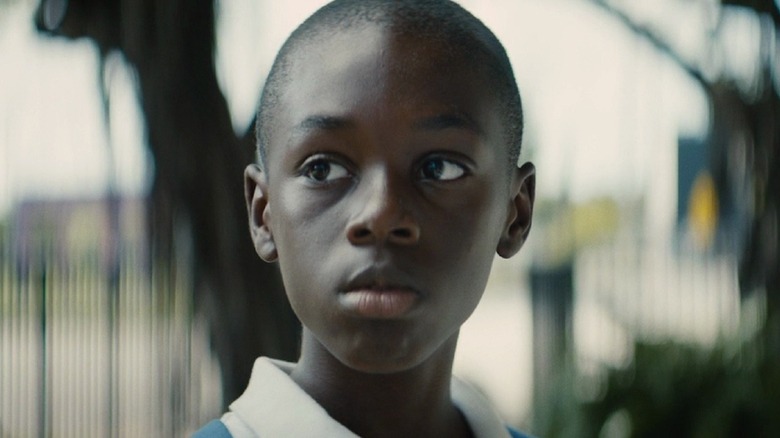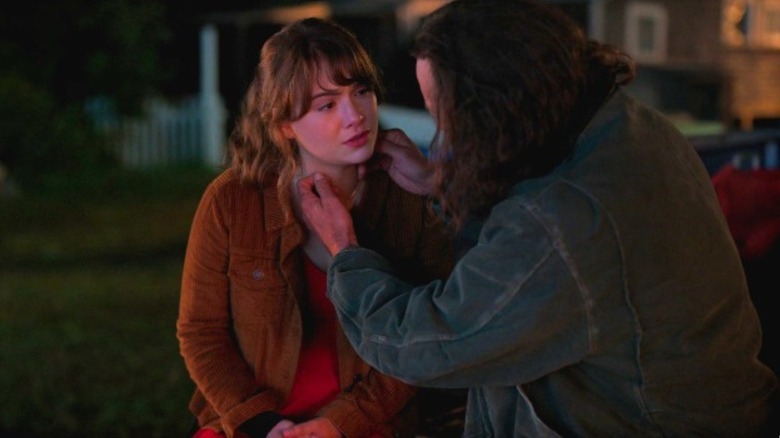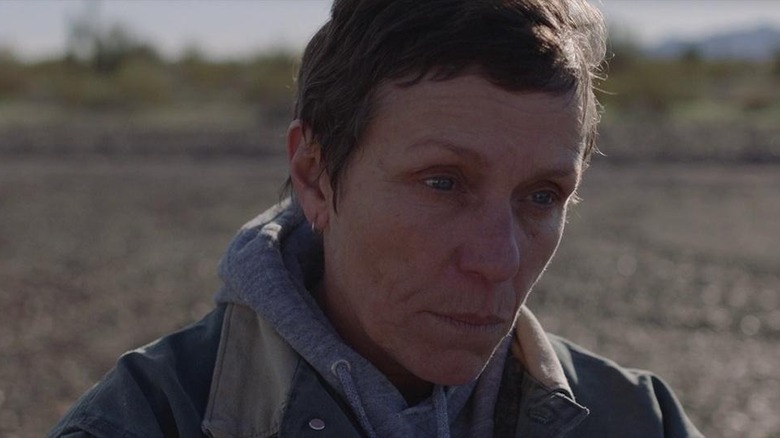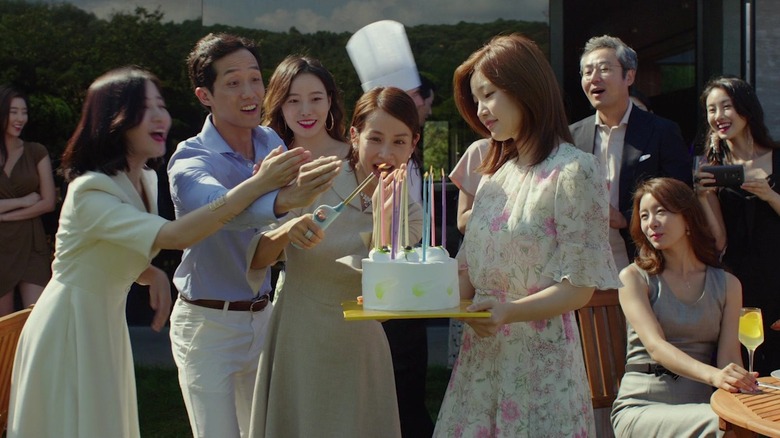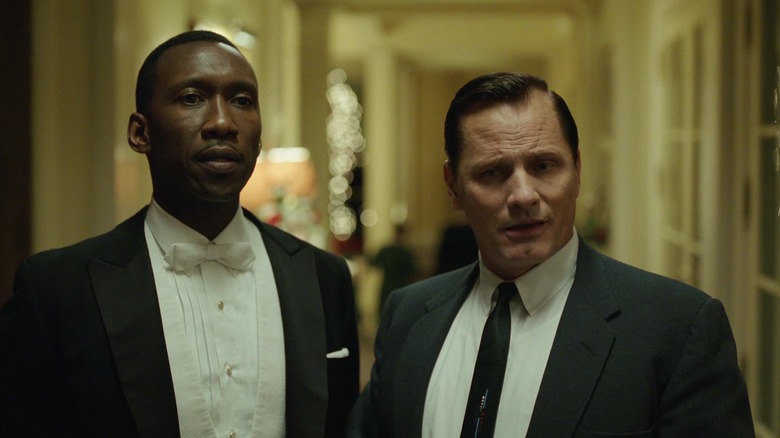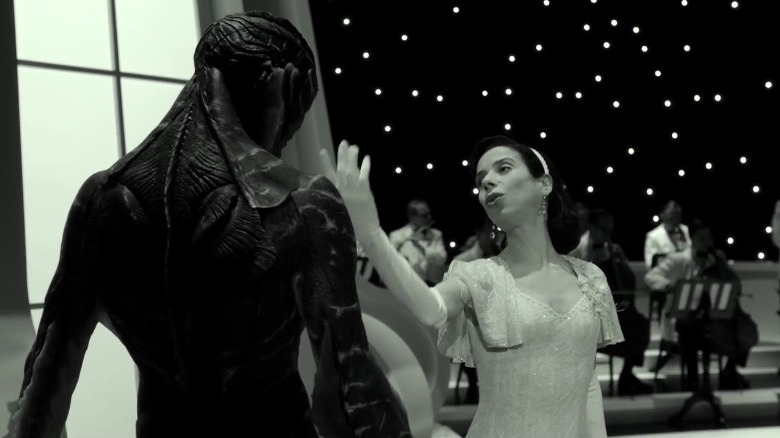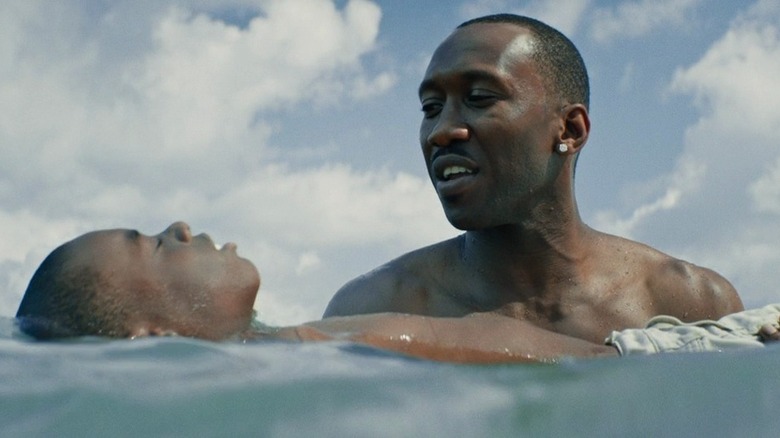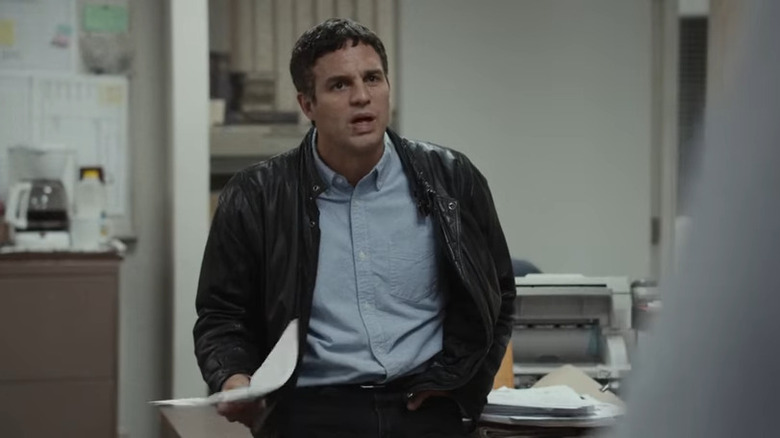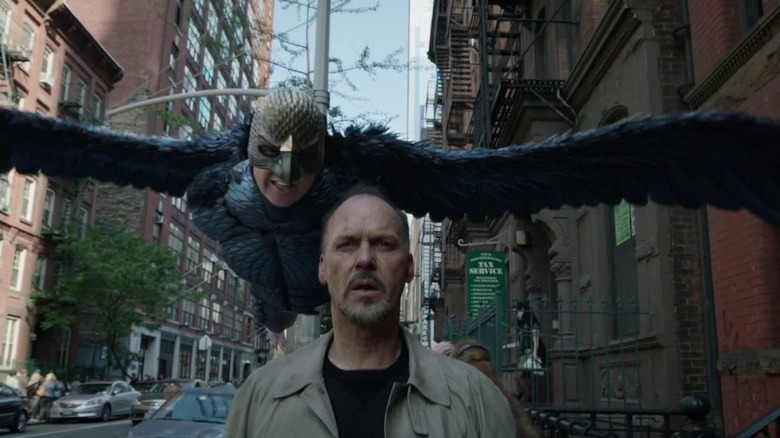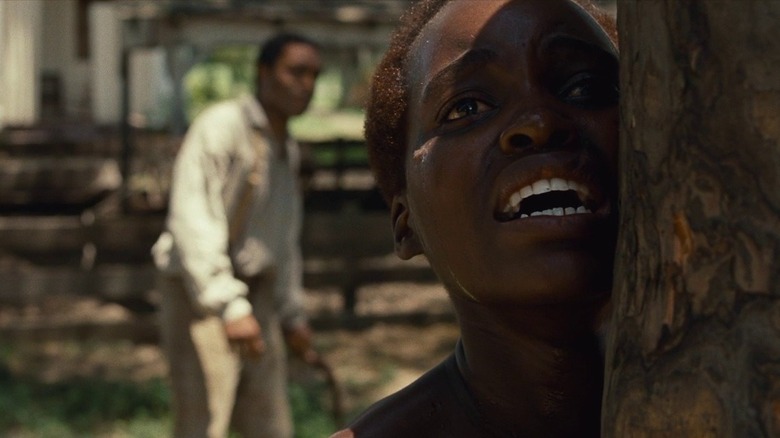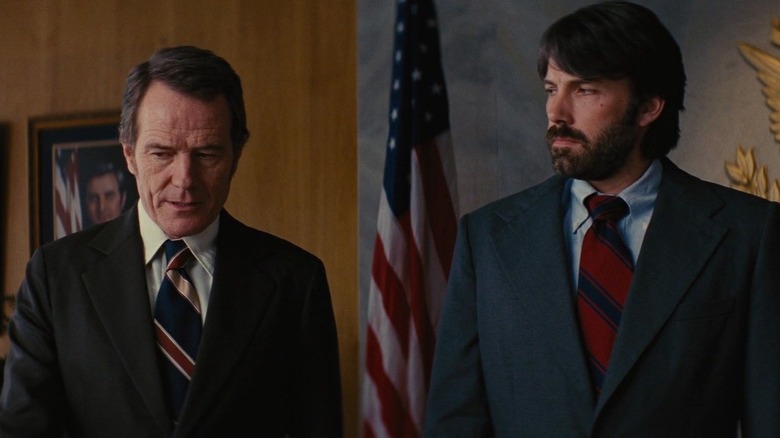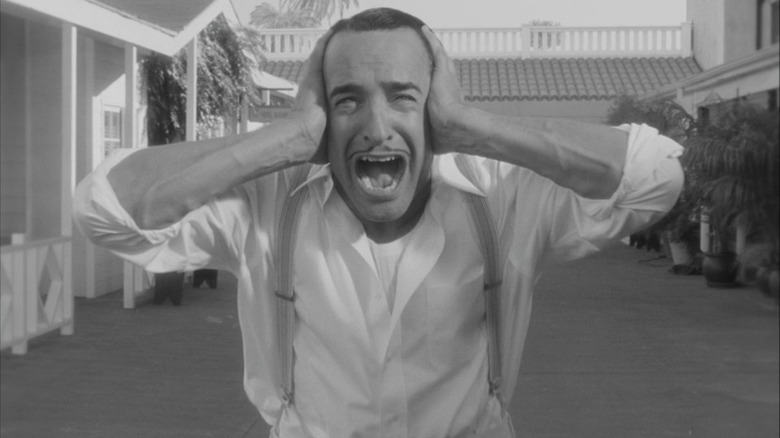The Most Memorable Scene From Every Best Picture Oscar Winner From The Past Decade
Every best picture winner at the Oscars has at least one standout scene. While the Academy Awards may not have the same influence they had when they began in 1929, or the ratings they had when the ceremony was first televised in the '50s, the best picture prize is still a coveted achievement in the industry. To win this prestigious award — especially in the last two decades when 10 nominees have been the norm — the presence of at least one show-stopping scene can be what elevates a movie to a real contender.
The best picture winners from the last 10 years consist of a diverse array of movies, but each one resonated with viewers and voters in a way that likely brings one particular scene to mind. It might be a stereotypical "Oscar clip" — where characters emote, shout, and chew the scenery — or it could be a quiet moment of tenderness and humanity. Some scenes are wild departures in tone from the rest of the movie — as if to make you appreciate it in real-time for showing restraint outside of that one moment. A great, noteworthy scene can be the difference between an acceptance speech or a haunting snub. Let's take a look at the most memorable scene from every best picture winner in the last decade.
CODA lends a hand
As with all of the movies on this list, there are many reasons that "CODA" won best picture in 2022. After two years of the pandemic, viewers may have been in the mood for a feel-good movie, and "CODA" easily ticked that box. In addition, it marked a positive step in the right direction for representation with a cast largely made up of deaf actors, and was the first best picture nominee with the full resources of Apple TV+ behind it during awards campaign season (per Variety).
But it's impossible to separate "CODA" and its Oscar victory from the scene that serves as its emotional climax, when aspiring singer Ruby (Emilia Jones), sings privately for her deaf father Frank (Troy Kotsur), who places his hands gently on her neck to feel the vibrations and "hear" what he could only imagine during her recital earlier in the movie. Both characters are moved to tears in a scene that cemented a best supporting actor award for Kotsur, and likely encouraged even the most cynical Oscar voter to back the movie as well. "CODA" is otherwise a relatively conventional coming-of-age story, but it is scenes like this that earnestly sell the emotion and in that respect, this film definitely delivers.
Nomadland quotes Shakespeare
"Nomadland" is unique among best picture winners in the way that it exists in the grey area between narrative film and documentary. A fictional adaptation of Jessica Bruder's non-fiction book, it follows Fern (Frances McDormand) and a few others characters made up for the film, as they interact with several real-life nomads that also appear in the book. Fittingly, the most memorable scene in "Nomadland" uses the rhythms of documentary filmmaking to take our breath away with a particular editing choice.
Fern is chatting aimlessly with Derek — one of the many wanderers that play themselves in the movie — and the subject of poetry comes up. Fern tries to see if she can recall the words to William Shakespeare's famous "Sonnet 18," also known as "Shall I compare thee to a summer's day?" It's a nice, small moment between her and Derek, but as the audio of Fern's recital continues, the movie shows us Derek walking away into the fading daylight, and then shows us Fern looking at photos of her own childhood. Driving home the movie's themes of what constitutes a life well-lived as we age under the yoke of capitalism, a dynamic edit mixes everything together: Fern is perhaps emotionally younger than ever, exploring the world and making new connections, and carrying the memory of her husband with her.
A bit of poetry and cinematic magic transcend time: just as the speaker of the poem points out that his love's "eternal summer will never fade," "Nomadland" shows us how human connection and love will linger long past many sunsets.
Parasite's unhappy birthday party
Although you could argue that almost every scene in "Parasite" is memorable, the entire movie builds with clockwork precision to the explosive birthday party scene where all the tension releases and bloody chaos unfolds. In a movie about class and societal hierarchy, the disastrous birthday party allows all of the barriers between the different levels of the Park household to collide: the Park family and their wealthy friends, the Kim family that have infiltrated their home in various servant roles, and the vengeful Geun-sae (Park Myung-hoon) — the former housekeeper's husband that's been literally driven underground by debt.
As Geun-sae takes out his rage on the various members of the Kim family, it sets off the chaos that reveals the pure self-interest of the wealthy Park Dong-ik (Lee Sun-Kyun) — who cares only about his own child's seizure and still can't hide his revulsion at the way the Kim family supposedly smell. This earns him a knife in thechest from Kim Ki-taek (Song Kang-ho). The birthday party is the center of the complex maze of resentment and human need in "Parasite," and lets us appreciate the simmering buildup of the movie in new ways upon repeat viewings.
Green Book's dining room scene
Even just a few years later, "Green Book" has aged the worst of any recent best picture winner. From the start, it was destined to generate controversy as it exists in a long tradition of centering white characters in Black stories. The title itself is a little misleading: it refers to the guides for Black Americans to stay safe when traveling the segregated south, but the movie is basically a buddy comedy between Viggo Mortensen's Tony "Lip" Vallelonga and Mahershala Ali's Dr. Don Shirley. Since the movie was co-written by Vallelonga's actual son, it inevitably frames him as the main character instead of Dr. Shirley.
"Green Book" is nonetheless compelling when engaged with on its own, amiable terms, and the dining room scene near the end brings out the most nuance and subtlety from its lead actors. When Dr. Shirley is not allowed to dine at the whites-only Alabama country club where's he due to perform, a somewhat complicated negotiation starts between himself, Lip, and the club's uptight staff. After bonding with Dr. Shirley throughout the tour, Lip is ready to resort to violence, but Dr. Shirley stays his hand and offers to still perform the gig if Lip wants, since he knows that his driver needs the money more than he does. Jointly, they decide to blow it off and hit up a more inviting nightclub. What "Green Book" lacks in nuance, it makes up for in the chemistry between its stars, who find an even footing among a screenplay somewhat burdened by cliché.
The Shape of Water's musical interlude
One of the most surefire ways to Oscar glory is to make your movie about the movies themselves. Guillermo Del Toro's "The Shape of Water" isn't subtle about its classic cinematic influences: viewers with even a slight eye for detail will note that the mysterious Amphibian Man (Doug Jones) bears more than a passing resemblance to the beast in "Creature from the Black Lagoon," for example. The main character Elisa (Sally Hawkins) also lives in an apartment above an ornate movie theater, where she and her amphibious love stop to marvel at the screen.
But in case there was any doubt, "The Shape of Water" really signals its identity as a paean to Old Hollywood with a fantasy sequence, in which the mute Elisa imagines herself singing and dancing in the style of Ginger Rogers. "The Shape of Water" shifts from color to black and white, and Elisa delivers a wonderful rendition of "You'll Never Know" — a classic ballad that actually won the best original song Oscar in 1944 for the movie "Hello, Frisco, Hello." Just before the darker third act gets underway, "The Shape of Water" lets us know we're in good hands: We can suspend our disbelief and let the romantic fantasy of the movies take us away.
Moonlight learns to swim
"Moonlight" is a relatively understated film — although its victory after "La La Land" was mistakenly read instead is maybe the most exciting best picture announcement of all time. In a film about the intersection of Blackness, masculinity, and cycles of violence, "Moonlight" connects different moments of quiet tenderness together. No scene is more memorable than when kind-hearted drug dealer Juan (Mahershala Ali) teaches young Chiron (Alex Hibbert) to swim in the opening chapter of the movie, "Little."
Wonderfully shot by director Barry Jenkins and cinematographer James Laxton, Juan and Chiron are alone in the water as the rest of the world fades away. Juan tells Chiron "you're in the middle of the world," and both characters share a moment of profound human connection, far away from the harsh realities on shore. It won't be long before Chiron comes to the revelation that Juan is the one dealing drugs to his neglectful mother Paula (Naomie Harris), severing their bond forever. But for just a moment, "Moonlight" creates its most enduring image and gives Chiron a memory of peace and calm to carry with him. In the film's closing moments, having finally reconnected with someone he can open up to, he remembers himself as a child again on the beach.
Spotlight holds out for the system
What makes "Spotlight" so cathartic to watch isn't the particulars of its narrative — although the true story of the Boston Globe team uncovering widespread child abuse by Catholic priests in 2002 is certainly compelling in and of itself. But it's one of the rare movies that take on the complexity and scope of the massive corruption that besieges the world we live in. Most stories, movies, or TV crime shows, limit themselves to one case or one bad apple, but "Spotlight" painstakingly takes us through the legwork involved in going after nearly a hundred priests, and the massive cover-up that enabled them to commit offenses over and over again.
Naturally, the best scene in "Spotlight" is when, at a crucial moment, editor Robby Robertson (Michael Keaton) has to tell an outraged Mike Rezendes (Mark Ruffalo) that they can't go to print, even though they have confirmation that the local Catholic Cardinal was aware of the allegations against one particular priest. It's one of the only scenes in the movie in which Ruffalo gets to let loose and really portray the absolute horror his character feels over what they're reporting, but he's still shot down by his editor. "Spotlight" is out to get the whole system and it ends with a chilling list of the hundreds of other cities worldwide in which similar massive scandals have been uncovered.
Birdman gives the people what they want
A bravura piece of filmmaking that has the illusion of being one continuous take, "Birdman or (The Unexpected Virtue of Ignorance)," finds an explosive and jarring way to let us breathe out near the end. The movie — mostly in real-time — has followed fading Hollywood star Riggan Thompson (Michael Keaton) as he tries to make a comeback on Broadway with a Raymond Chandler adaptation, and it's composed almost entirely of close-quarters shots of characters yelling at one another over a percussive, jazzy score.
As a hungover Riggan wakes up on a stoop and stumbles to the theater for his play's opening night, he imagines his persona as "Birdman" (an obvious riff on Keaton's role in the original 1989 "Batman") whispering in his ear about a potential comeback. As he does, the world around him suddenly erupts in explosions and giant invading bird monsters, a sudden and raucous spectacle that really drives home how immediate and claustrophobic the rest of the movie has been. "Birdman" emphasizes its main character's fragile humanity, all the way through to its ambiguous ending, by reminding us of the "movie magic" that he's given up to try to find legitimacy.
12 Years a Slave's harrowing whipping scene
"12 Years a Slave" is by design one of the more difficult-to-watch best picture winners in recent memory. Steve McQueen's adaptation of the real Solomon Northup's memoir contains many harrowing sequences that demonstrate the brutal realities of slavery in 1840s America. The majority of the cruelty is at the hands of increasingly diabolical white overseers like Michael Fassbender's Edwin Epps. The most memorable and painful scene, however, is when Epps forces Solomon (Chiwetel Ejiofor) to whip his friend and fellow slave Patsey (Lupita Nyong'o).
In a punishingly long, unbroken take we watch as Solomon has no choice but to whip Patsey. Instead of the "villains" of the movie doing the whipping, we're suddenly forced to contemplate the actual visceral reality of whipping another human as we watch Solomon's open despair as he's forced to continue. After already putting Solomon through endless brutality — involving a painstaking scene in which he's hung by the neck just barely able to stand on his toes — "12 Years a Slave" cements its place in our memory by showing the unflinching reality of the impossible inhumanity of slavery.
Argo puts a point on it
Regardless of its particular historical accuracy, best picture winner "Argo" was deft at navigating the problem of tone that any "stranger than fiction" true story has to deal with. At some point, with something ridiculous happening — like the CIA staging a fake science fiction movie in order to rescue American diplomats during the Iran hostage crisis — you need your characters to display some self-awareness and display that they're also aware that it's a pretty extreme idea.
"Argo" faces this head-on with a delightful early scene where CIA Deputy Director Jack O'Donnell (Bryan Cranston) and agent Tony Mendez (director and star Ben Affleck) describe the operation to their boss — played in an uncredited cameo by the late Phillip Baker Hall. With just the right amount of incredulity, the director of the CIA wonders if a fake sci-fi movie is really a good idea. His underlings admit that all they have are bad ideas, but "this is the best bad idea we have." In a movie full of outlandish tension, a key scene of bureaucratic humor grounds "Argo" for the antics to come.
The Artist's sonic nightmare
No force is greater in Hollywood than nostalgia. Even back in 2012, when "The Artist" won best picture, you'd have to have at least been in your nineties to actually remember when movies made the transition from silent to "talkies." But the throwback to the silent era charmed the Academy, and no scene is more memorable than a dream sequence that played with the reality of the sound mix itself.
Foretelling the imminent disaster his silent movie stardom is about to face, George Valentin (Jean Dujardin) has a dream in which he can suddenly hear everything around him: the clink of a glass, the barking of his scene-stealing dog, the ringing of a phone. The entire world is suddenly noisy, except for his own voice. He eventually stumbles outside and yells in anguish when a falling feather lands with the sound of an explosion. With one scene, "The Artist" establishes itself as more playful and inventive than an exercise in silent movie nostalgia had any right to be.
